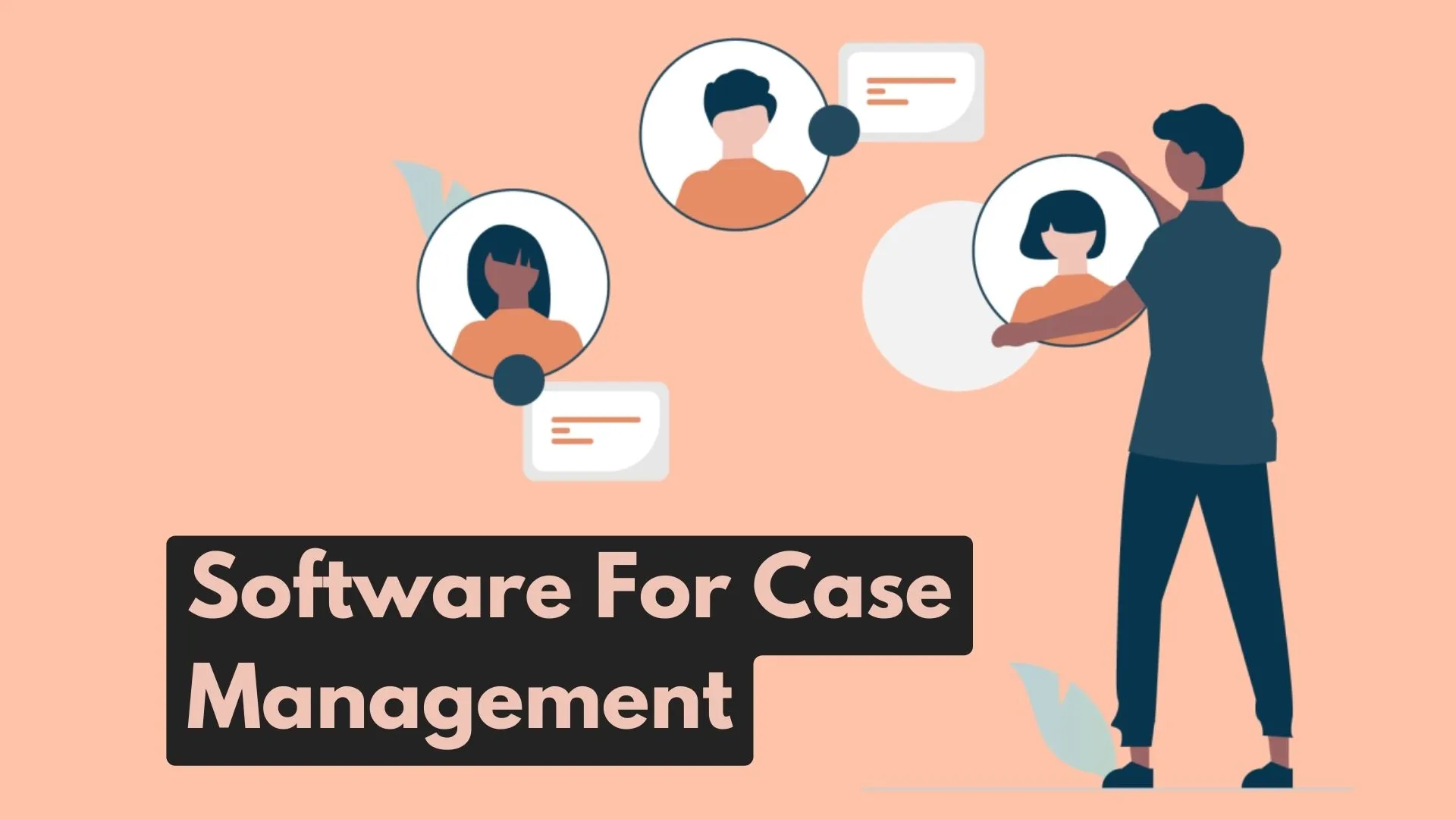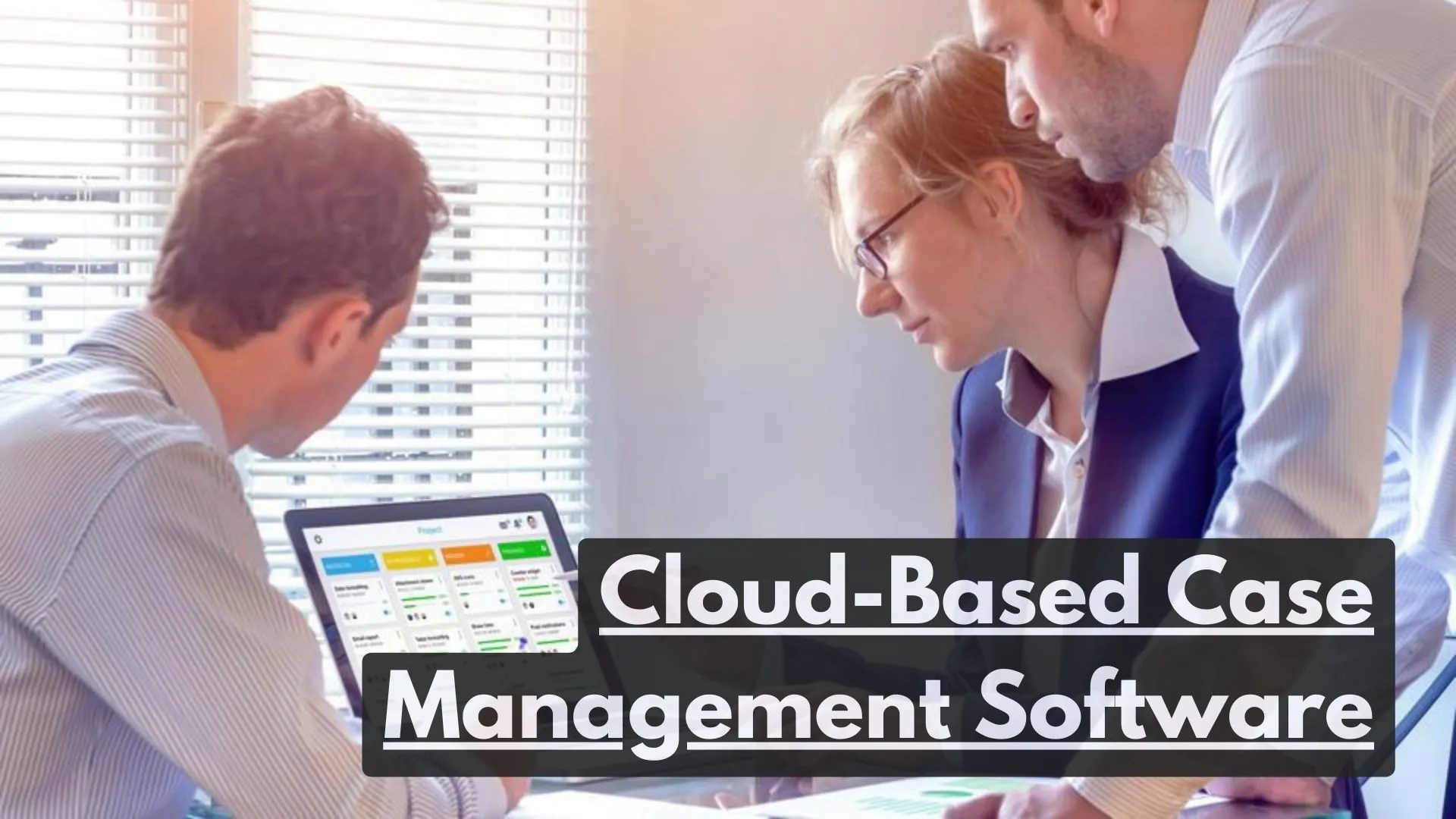In the ever-evolving landscape of organizational management, the need for streamlined processes and heightened efficiency has become more pronounced than ever.
Case Management Software (CMS), is a technological solution designed to revolutionize the way businesses handle projects, cases, and workflows.
This article aims to provide an in-depth review of Case Management Software, including its definition, essential characteristics, tangible & intangible benefits of using such software, various types, and practical implementations with real-life case studies, just to help you get started.
The ultimate goal of writing this piece of content is to help people quickly learn and get started with any type of CMS you have acquired for your purpose.
Below you can find the table of contents that you can use to navigate around the topic of your interests. Let’s dive right in.
What is Case Management?
Case management is a systematic approach to managing and coordinating complex processes that involve multiple steps, stakeholders, and resources, ya know?
It involves overseeing the entire life cycle of a case, from initiation to closure, making sure that all tasks are completed efficiently and effectively.
Case management is essential for organizations across various industries, including:
✔️ Legal
Law firms use case management software to manage their cases, clients, and deadlines. It helps them track progress, organize documents, and communicate with clients and colleagues.
✔️ Social Work
Social workers use case management software to track client progress, manage appointments, and document interventions. It helps them provide coordinated care and ensure that clients are receiving the services they need.
✔️ Healthcare
Healthcare providers use case management software to manage patient care, coordinate appointments, and track treatment plans. It helps them improve patient outcomes and reduce costs.
✔️ Government
Government agencies use case management software to manage programs, track grants, and monitor compliance. It helps them improve efficiency and accountability.
✔️ Business
Businesses use case management software to manage projects, track customer interactions, and resolve issues. It helps them improve customer satisfaction and increase productivity.
Key Features of Case Management Software
Here are some of the key features that a good case management software should have:
✅ Centralized Database
Think of the centralized database as the beating heart of any top-notch case management software. It’s the hub where all the vital information about cases resides—client details, case specifics, task assignments, documents, and communications.
This centralized storage setup is a game-changer, making it a breeze for users to grab the info they need and stay on top of case progress.
✅ Case Tracking
Consider case tracking as the unsung hero of case management software. It’s the feature that lets users weave through the entire life cycle of a case, from its birth to the closing act.
This involves crafting case profiles, doling out tasks, keeping tabs on deadlines, and monitoring the journey from start to finish.
✅ Task Management
Task management steps up as the superhero for handling those intricate cases with multiple moving parts.
A stellar case management software should empower users to craft, assign, and track tasks effortlessly. Picture features like setting deadlines, monitoring progress, and prioritizing tasks seamlessly.
✅ Document Management
Meet the organizational wizard in case management software—document management. This feature ensures that all the papers, from legal documents to medical records and financial statements, have a tidy home.
It’s the guardian that keeps everything related to a case neatly stored, organized, and easily accessible.
✅ Reporting and Analytics
Consider reporting and analytics as the Sherlock Holmes of case management software. These features dig into the nitty-gritty, offering insights into how well the case management process is ticking along.
Generating reports on case progress, task completion, and other key metrics is the name of the game.
✅ Collaboration and Communication
In the world of case management, teamwork makes the dream work. Look for case management software that plays the role of the ultimate team facilitator, with shared calendars, discussion forums, and real-time messaging to keep everyone on the same page.
✅ Security and Data Privacy
Given the sensitive nature of the data involved, security is paramount. Opt for case management software that’s a fortress of protection, boasting encryption, robust access controls, and audit trails to keep client info and medical records under lock and key.
✅ Integration with Existing Systems
Think of integration with existing systems as the magic wand that streamlines your workflow.
A top-tier case management software should seamlessly sync with your CRM, ERP, and accounting software, waving goodbye to redundant data entry hassles.
Types of Case Management Software With Case Study
Case management software is a super flexible tool that can be used to manage a whole bunch of different processes across a bunch of different industries.
In order to effectively meet the unique needs of various industries, case management software is commonly classified into different types based on industry or functionality.
Some common types of case management software:
✅ Legal Case Management Software
Legal case management software is designed to streamline legal processes for law firms, attorneys, and paralegals.
It helps manage cases from intake to closure, including tracking deadlines, organizing documents, communicating with clients and colleagues, and generating invoices.
>>> Understanding Legal Case Management Software <<<
Examples:
Case Study
A law firm that’s been having trouble handling its caseload and meeting deadlines decided to implement Clio, a legal case management software.
Due to this, the company saw a big decrease in missed deadlines, better communication with clients, and more billable hours.
✅ Customer Relationship Management (CRM) Case Management Software
CRM case management software is intended to help organizations manage their connections and interactions with customers.
It facilitates managing customer support cases, keeping track of client interactions, resolving problems, and analyzing customer data.
Examples:
Case Study
To handle support queries from customers, an online retailer deployed Salesforce Service Cloud. Shorter response times for customer service, more customer happiness, and higher customer retention were the outcomes for the business.
✅ Social Work Case Management Software
Social workers can better manage client cases and deliver coordinated care by using social work case management software. It supports scheduling, documenting interventions, monitoring client progress, and regulatory compliance.
Examples:
Case Study
To handle client cases, a social services organization put CareWare into use. Consequently, the agency witnessed better customer outcomes, more employee productivity, and better adherence to laws.
✅ Healthcare Case Management Software:
Healthcare case management software is intended to help healthcare providers manage patient care and coordinate treatments. It aids in the tracking of patient progress, the management of appointments, the documentation of treatment plans, and the reduction of readmissions.
Examples:
Case Study
To manage patient care coordination, a hospital deployed Athenahealth. As a result, the hospital saw better patient outcomes, fewer readmissions, and higher patient satisfaction.
✅ Government Case Management Software
Government case management software is specifically developed to facilitate the efficient management of programs, the monitoring of awards, and the enforcement of compliance within government agencies.
The utilization of this technology aids in the optimization of workflows, the enhancement of operational efficiency, and the promotion of accountability.
Examples:
Case Study
A government agency implemented Granicus to manage grants and funding programs. As a result, the agency experienced improved grant management processes, increased transparency, and enhanced accountability.
✅ Business Case Management Software
Business case management software helps companies keep track of projects, talk to customers, and solve problems. It makes things run more smoothly, makes customers happier, and boosts productivity.
Examples:
Case Study
A software company set up Kissflow to keep track of the whole project’s lifetime. Since then, the company has had better project management, fewer project delays, and better teamwork.
These examples show the wide range of case management software that is out there. Each one is designed to meet the unique needs and problems of a different role or industry.
Organizations can improve their processes, become more efficient, and reach their goals by choosing the right type of case management software.
Tangible & Intangible Benefits of Implementing Case Management Software
Some of the real and not-so-real benefits of using case management software, along with examples of companies that have seen results in the good direction:
Tangible Benefits of Implementing Case Management Software
| Benefit | Example |
|---|---|
| Increased Efficiency and Productivity | A law firm using legal case management software reported a 30% reduction in time spent on administrative tasks, allowing attorneys to focus more on billable work. |
| Reduced Costs | A healthcare organization implementing healthcare case management software reduced administrative costs by 25% and improved patient care coordination. |
| Improved Case Tracking and Management | A social services agency using social work case management software reduced case backlogs by 40% and improved client outcomes. |
| Enhanced Collaboration and Communication | A business using business case management software reported a 15% increase in project success rates due to data-driven decision-making. |
| Accurate Data and Analytics | A business using business case management software reported a 15% increase in project success rates due to data-driven decision-making. |
Intangible Benefits of Implementing Case Management Software
| Benefit | Example |
|---|---|
| Improved Customer Satisfaction | A customer service department using CRM case management software reported a 10% increase in customer satisfaction scores and a 5% reduction in customer churn. |
| Enhanced Risk Management | A financial services firm implementing case management software reduced risk exposure by 20% and improved regulatory compliance. |
| Increased Innovation and Agility | A healthcare organization using healthcare case management software reported a 30% increase in staff satisfaction and a 15% increase in innovation projects. |
| Improved Regulatory Compliance | A government agency implementing government case management software reported a 25% reduction in audit findings and improved regulatory compliance. |
| Enhanced Decision-Making | A manufacturing company using business case management software reported a 10% increase in project success rates and a 15% reduction in project costs due to data-driven decision-making. |
These advantages are available to organizations of all sizes and across a wide range of industries. Any firm that wishes to improve its efficiency, productivity, and customer happiness can benefit from case management software.
Real-World Examples Case Management Software Implementation
Here are some additional real-world examples of organizations that have seen positive outcomes from implementing case management software:
✅ After installing case management software, a social services organization reduced its case backlog by 80% and increased client outcomes by 20%.
✅ Following the implementation of case management software, a healthcare provider lowered its readmission rate by 15% and increased patient satisfaction by 10%.
✅ After installing case management software, a financial services organization lowered its customer churn rate by 5% and raised its customer lifetime value by 10%.
These are just a few of the several organizations that have profited from the implementation of case management software.
If you are thinking about installing case management software in your firm, I recommend you conduct your homework and pick a solution that suits your specific requirements.
Considerations Before Choosing a Case Management Solution
Picking the perfect case management software (CMS) isn’t just a decision; it’s a strategic move that can make waves in your organization’s efficiency, productivity, and overall success.
It’s not a one-size-fits-all scenario, so to make a savvy choice, you’ve got to delve into the nitty-gritty.
Take the time to carefully weigh various factors, ensuring they align seamlessly with your organization’s unique needs and requirements.
After all, a well-informed choice is the compass that guides your path to streamlined operations and triumphant success.
Here’s a comprehensive guide to help you navigate the selection process:
✔️ Identify Your Needs and Goals
Begin by clearly defining your organization’s goals and the specific challenges you aim to address with a CMS.
Analyze your current processes, pain points, and areas for improvement to determine the functionalities and features that are most critical for your organization.
✔️ Evaluate Scalability and Growth
Consider the size and growth potential of your organization. Choose a CMS that can scale seamlessly as your business expands, accommodating both current and future needs.
Ensure it can handle increasing caseloads, data volumes, and user demands without compromising performance.
✔️ Assess User-Friendliness and Training Requirements
The success of any CMS hinges on user adoption. Evaluate the system’s user-friendliness and intuitiveness, ensuring it aligns with the technical expertise of your team members.
Consider the vendor’s training and support resources to minimize onboarding time and maximize user proficiency.
✔️ Integrate with Existing Systems
Assess compatibility with your existing technology infrastructure, including CRM, ERP, and accounting systems.
Seamless integration eliminates the need for data re-entry, reducing errors and streamlining workflows.
Evaluate the availability of APIs (Application Programming Interfaces) and pre-built integrations to simplify the integration process.
✔️ Evaluate Security and Data Privacy
Data security is paramount. Ensure the CMS meets industry standards for data protection and encryption. Verify compliance with relevant privacy regulations, such as GDPR and HIPAA, to safeguard sensitive client or patient information.
✔️ Consider Cost and Value
Evaluate the total cost of ownership, including licensing fees, implementation costs, ongoing maintenance, and potential upgrades.
Assess the return on investment (ROI) by considering the potential cost savings, efficiency gains, and improved outcomes that the CMS can deliver.
✔️ Request Demos and Trials
Engage with potential CMS vendors to request demonstrations and trial periods. This hands-on experience will allow you to evaluate the system’s functionality, user interface, and compatibility with your specific needs.
✔️ Seek Feedback from Existing Users
Gather feedback from organizations that have implemented similar CMS solutions. Understand their experiences, challenges, and successes to gain valuable insights into the system’s real-world performance and effectiveness.
✔️ Consider Future Trends and Innovation
Evaluate the vendor’s commitment to innovation and development. Consider the availability of cloud-based solutions, artificial intelligence (AI) capabilities, and other emerging technologies that can enhance the CMS’s value over time.
Integration with Other Systems
For enterprises to maximize operational efficiency, streamline workflows, and improve data-driven decision-making, seamless integration of case management software (CMS) with other tools and systems is critical.
Integration provides data sharing, automation, and enhanced visibility throughout the company by breaking down silos between disparate systems.
Importance of Seamless Integration
☑️ Eliminate Data Re-entry and Errors
Integration is the antidote to manual data entry headaches. By seamlessly connecting systems, it eradicates the need for redundant data input, slashing the risk of errors and inconsistencies.
This not only saves valuable time but also elevates data accuracy, ensuring a consistent and reliable dataset across various platforms.
☑️ Streamline Workflows and Automation
Integration transforms workflows into a well-choreographed dance. It facilitates automated data exchange between systems, cutting through manual tasks and freeing up your team to focus on the meatier, more value-added activities. Consider it the backstage crew that makes the show run seamlessly.
☑️ Enhance Collaboration and Communication
Think of integration as the ultimate team builder. It fosters effortless collaboration and communication among team members, departments, and external stakeholders.
By providing a unified source of truth for data and information, it tears down silos, paving the way for improved coordination and synergy.
☑️ Improve Data-Driven Decision-making
Integration pulls back the curtain on comprehensive insights. By offering a consolidated view of data from various sources, it empowers organizations to make decisions grounded in data.
This data-driven approach isn’t just a buzzword; it’s a catalyst for improved outcomes, heightened efficiency, and smarter resource allocation.
Common Integration Scenarios
☑️ CRM Integration
When your CMS joins forces with CRM (Customer Relationship Management) systems, magic happens. Suddenly, you have a unified hub that offers a panoramic view of client interactions, case history, and potential sales opportunities.
This integration isn’t just a tech marvel; it’s a game-changer for elevating customer service, optimizing sales processes, and fortifying those precious customer relationships.
☑️ ERP Integration
Picture your CMS seamlessly conversing with ERP (Enterprise Resource Planning) systems. This isn’t just a chit-chat; it’s a symphony of communication between case management and financial data.
The result? A streamlined ballet of billing, cost tracking, and resource management processes that dance together in perfect harmony.
☑️ Document Management Integration
CMS and document management systems in sync? It’s like a choreographed dance of efficiency. This integration simplifies the storage, retrieval, and sharing of documents, ensuring that access to case-related files is as smooth as silk.
Say goodbye to the time-consuming hunt for documents; this integration is the guide that keeps files in perfect formation.
☑️ Calendar and Email Integration
CMS playing nice with calendars and email systems is like having your personal assistant. With automatic scheduling of appointments, tasks, and reminders, this integration turns chaos into order.
The result? Improved time management, reduced scheduling conflicts, and communication that’s as seamless as a well-rehearsed performance.
Final Thoughts
Case Management Software functions as an intelligent ally for organizations. It excels at organizing tasks, streamlining processes, and adapting seamlessly to various work scenarios.
It’s not just a problem-solver for the present; think of it as a supportive companion that learns and evolves alongside your needs.
With its unique capabilities in automation, data comprehension, and robust security measures, it’s more than a tool for the here and now – it’s a strategic partner for the future. Opting for Case Management Software is akin to selecting a dependable friend who enhances your work efficiency and keeps you ahead in the dynamic business landscape.
In simpler terms, it’s the ultimate teammate that simplifies tasks, automates processes and evolves with your workflow.
Its intelligent features for task management, data analysis, and security make it more than just a tool – it’s a future-ready collaborator.
Choosing Case Management Software is like bringing on board a savvy assistant, an investment that pays off in increased efficiency and ongoing success.
Explore our other blogs on Case Management Software on the website site.





Leave a Reply